The regional cuisines of Italy typically reflect the homegrown products or spices that passed through on trade routes to or from far away destinations. The cuisine of the region of Liguria, on the west coast of Italy, distinguishes itself by the things you expect to find that are missing. How is it possible that the cuisine of this small strip of a region that contains the five fishing villages of Cinque Terre, the famed resort town of Portofino, and its capital, Genoa, a port city that was once queen of the spice trade and the entry point for foods from the New World, focuses as much on vegetable dishes as fish, uses primarily fresh herbs rather than spices, and ignores the tomato and corn arriving daily from the New World, and used all over the rest of Italy in sauces and polenta?
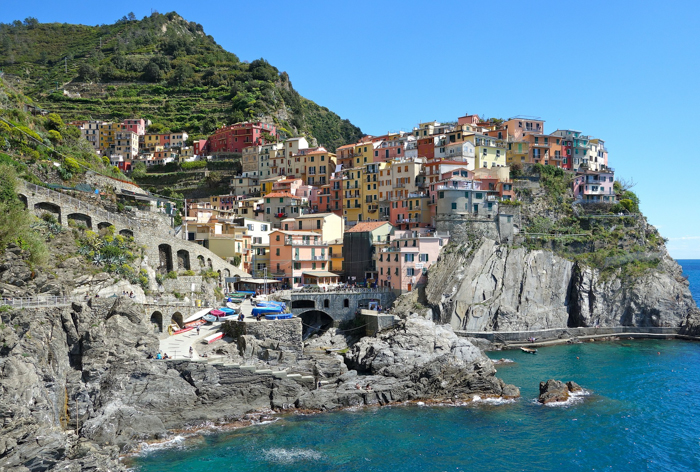
The cooking of this region was shaped by its main industry - sailing and trade. A returning sailor has spent months on board a merchant ship, eating fish and preserved foods, with tomatoes and corn when in port in the Americas. So the last thing these sailors wanted to eat on their return home was fish. Instead, they craved fresh vegetables, fruit and aromatic herbs from the sun-soaked slopes of their native land. The climate in this mountainous region is mild, perfect for growing vegetables, olives and grapes. So the traditional dishes of Liguria include pesto, focaccia, and olive oil. Fish dishes abound, but most are recent additions to the table, in response to demand from tourists visiting the “Italian Riviera”.
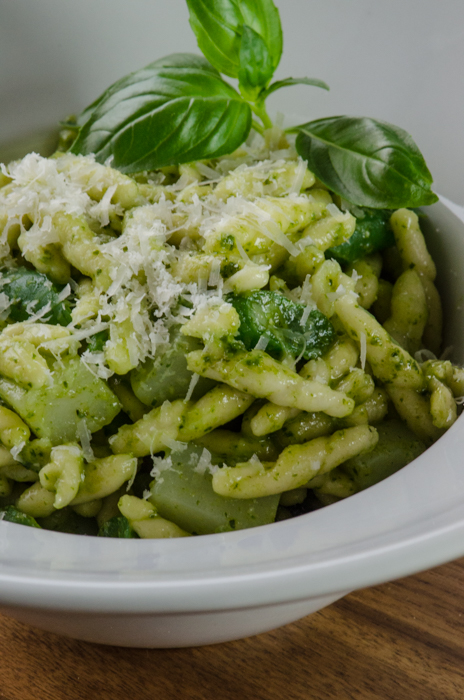
The following is a list (by no means comprehensive!) of just a few of the wonderful dishes that make up the cuisine of Liguia.
Aggiadda- a zesty sauce made from fresh garlic pounded with vinegar and salt that used to season soups or other dishes.
Baccalà and Stocchefisce accomodou - Salt or air dried cod, cooked with potatoes and olive oil. The sccomodou adds, vegetables, mushrooms, olives and pine nuts in an herb and anchovy seasoned sauce.
Bianchetti or Gianchetti - Larval anchovies, prized and eaten marinated or raw with lemon, olive oil and fresh parsley.
Canestrelli - Ring shaped biscuits.
Cappon magro - Translates as “lean capon”, but contains no capon. A towering dish constructed from cooked vegetables, eggs, many kinds of fish, oysters and lobster in broth seasoned with garlic and anchovies.
Castagnaccio - sweet chestnut and pine nut tart.
Cima ripiena - veal breast stuffed with a savory herb filling made from vegetables, pistachios and cheese held together with eggs.
Ciuppin - a mixed seafood soup, originally intended to use up leftovers from the fish market. This fish and tomato soup uses stale bread as a thickener and is seasoned with white wine, garlic and onions.
Coniglio alla Carlona - Rabbit, black olives and pine nuts in an herbed white wine and caper sauce
Corzetti - Pasta circles stamped with decorative shapes to aid the pasta in holding sauce more effectively.
Farinata - Chick pea flour is baked with olive oil.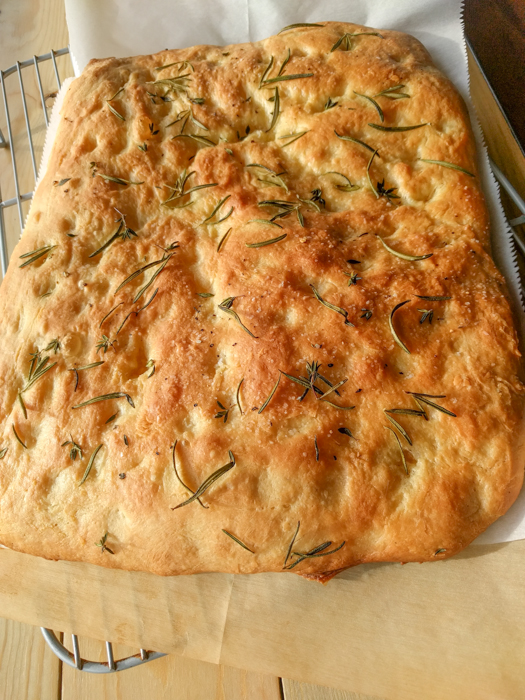
Focaccia/Fugassa - Liguria is the home of this olive oil soaked flatbread famous all over Italy. Locals enjoy focaccia con le cipolle, focaccia with onion, for breakfast.
Friscieu - Raisin and apple fritters.
Lasagnette - Chestnut flour pasta.
Mandilli de Saea - sheets of paper thin pasta that sometimes contain fresh herbs.
Mes-ciua - Soup with beans, farro and olive oil.
Olive oil - Olives were first introduced by the ancient Greek colonists, and in the 1700s Liguria became Italy’s top olive oil producer. No longer the most productive, it is still distinguished as a hig quality producer. Its oil is sweeter and fruity, matching well with the cuisine of the region.
Pansòuti con la Salsa di Noci - These pockets of dough are filled with ricotta cheese and a seasoning blend called preboggion, consisting of borage, chervil, chicory and herbs. This is served with a walnut sauce and freshly grated Parmigiano Reggiano.
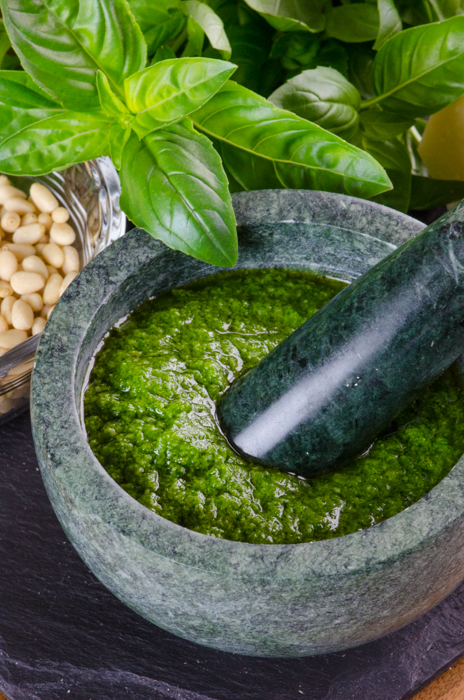
Pesto alla Genovese - Liguria basil blended with extra virgin olive oil, pine nuts, garlic and Parmigiano Reggiano.. It is not only used for pasta, but can also be added to soups or rice dishes.
Testaroli - Panckes that are first fried, then cut into strips and briefly simmered before being served with pesto or olive oil and cheese.
Torta Pasqualina - A savory cake served at Easter. Its 33 layers contain artichokes or chard, hard cooked eggs and ricotta flavored with herbs.
Torta Salata - Thin savory tart with a delicate crust surrounding a vegetable filling - zucchini, onions, spinach. The most typical filling is the local chard, bietola.
Totani - squid stuffed with garlic, cheese and bread, cooked in wine and tomatoes.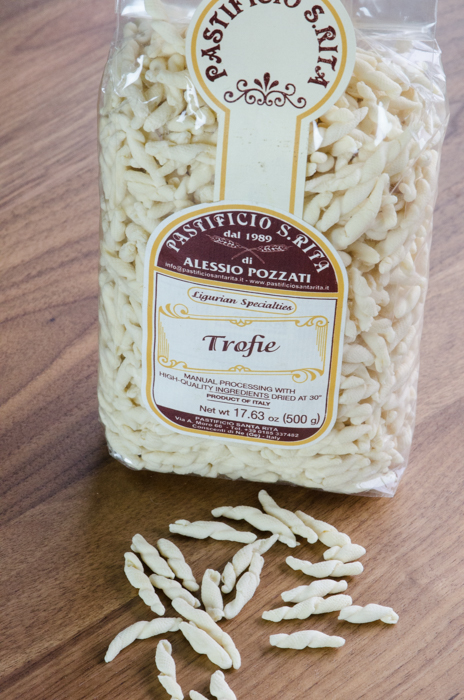
Trenette - a narrow dry pasta, is enjoyed served with green beans and potatoes, seasoned with pesto. Other popular dry pasta shapes include the trofie or troffiette.


